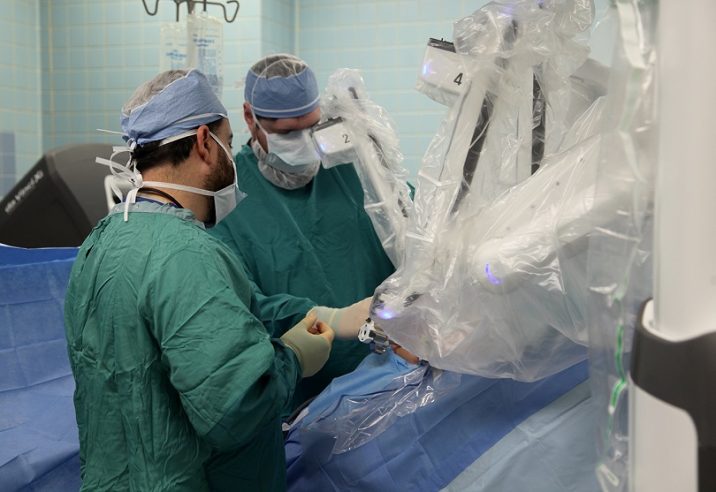When it comes to performing complex surgery, even the best surgeon may need a helping hand, even if that hand is cold, metal and strong enough to hold the smallest of instruments. For that reason, Augusta University Health is introducing the da Vinci XI into the operating room.
“Using the new XI system will allow us to increase the number of patients able to receive their surgery robotically,” said Dr. Rabii Madi, director of Robotic Surgery and Urologic Oncology at Augusta University Health and a urologic surgical oncologist at the Georgia Cancer Center and Medical College of Georgia. “The new robot was designed for colorectal, bariatric and other general surgeries requiring the surgeon to work in multiple quadrants of the body.”
The new XI robot (pronounced X-I), which made its debut in late December at AU Health, will allow multiple teams to work together on multiple surgeries in the same operating room setting.
“Imagine a patient who has a kidney tumor and a mass on an ovary,” said Dr. Martha Terris, chief of the section of Urology at the Medical College of Georgia. “The new robot will allow me to remove the kidney tumor. When I’m done, a gynecological surgical oncologist could then take control of the robot to remove the ovary.”
This multidisciplinary team approach, which is a hallmark of patient care at the Georgia Cancer Center, is possible thanks to a boom arm created for the XI system. The boom can rotate almost a full 360 degrees. It allows the robot to move the instruments up from the pelvic region into the abdominal cavity. It can also move side-to-side. All of this movement can cut down on the time a patient needs to stay under anesthesia because the surgery team does not have to perform the first surgery, stop, undock the robot arms, move them into the second position and then perform the second procedure.
“In some cases, setting up for a second procedure can take around an hour,” Terris said. “The design of the new XI system allows us to complete the procedures faster for our patients, so they can begin their recovery sooner.”
Before now, surgeons who chose to do a surgery at AU Health used the da Vinci SI system. While the system is still perfectly applicable for patients undergoing some surgeries, having the new XI system will cut down on the wait time for patients. Having two robots means half the wait time for surgeons needing a robot assistant to perform a successful surgery.
“Another big advantage is our ability to navigate inside a patient’s body through smaller incisions,” Madi said. “With the SI system, the incision for the camera port was 12 millimeters. With the new XI robot, it’s just 8 millimeters.”
When inside the body, software updates in the new XI system help the instruments move much more smoothly. It also includes a robotic stapler with staples of different sizes.
“For some bariatric surgeries, the SI robot may have not been the best option,” Madi said. “This is because it only included one size of staple, which was not a good fit for those surgeons.”
It’s not just the robot that got smarter. The new XI system comes with a “smart” operating table. It knows how the patient is positioned on the table and where the operation is happening inside their body.
“You can change the patient’s position without having to undock the robot,” Madi said. “The instruments can even move with the table.”
The end goal of the new robot always goes back to the patient experience. Every new option that facilitates a shorter, more precise operation allows the patient to begin their recovery sooner.
 Augusta University
Augusta University




